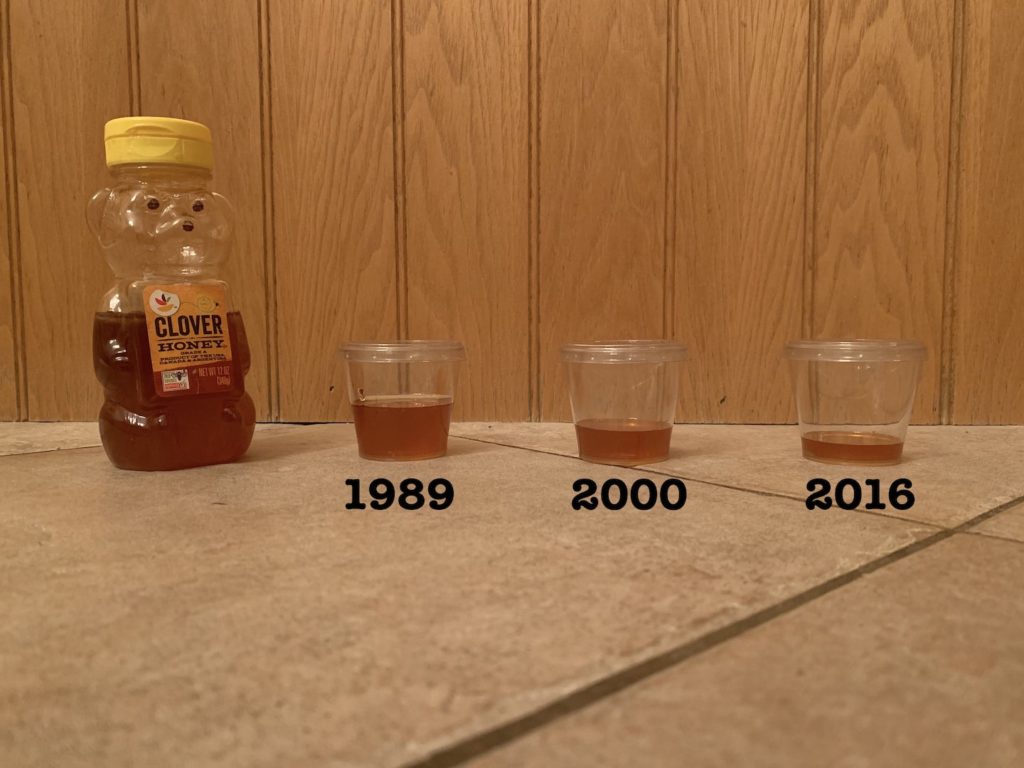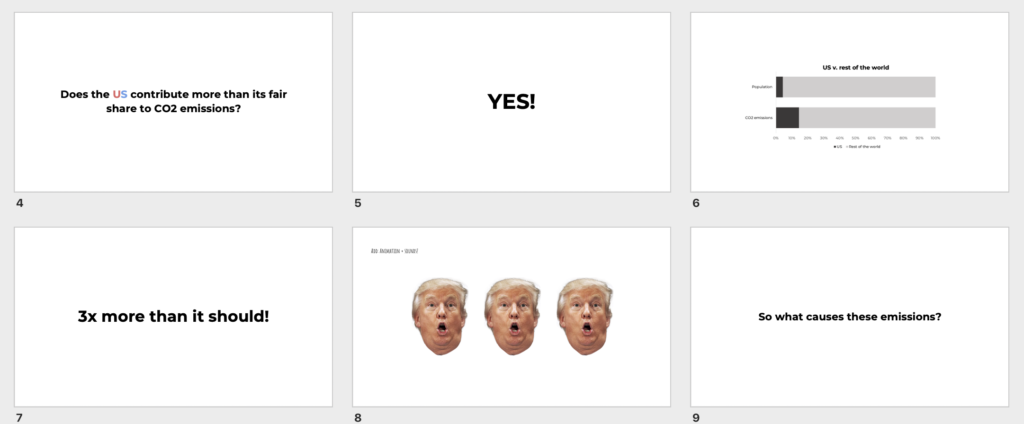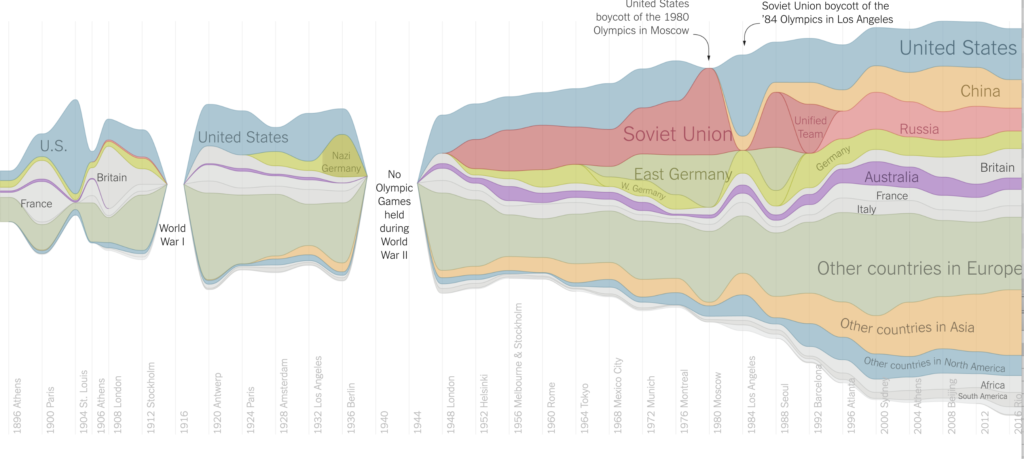Sule Kahraman, Hamed Mounla, Sarah Mousa
The data says that correlations between economic growth rates and carbon emissions vary widely across country. We want to tell this story because it could undermine a key argument for non-restrictive emissions policies and drive greater policy actions towards curbing environmentally-harmful emissions.
Original Post: The original blogpost we used for this assignment is on charting correlations between CO2 emissions and economic growth. Originally, that post was designed for a politically-influential audience; we suggested attendees of the Davos World Economic Forum since it uniquely gathers influential figures from around the world. The message of the visuals is that 1) economic growth is possible without dramatic increases in carbon footprints and that 2) policy actions can shape outcomes both in terms of growth and carbon emissions; or namely, that it is policies that dictate correlations between economic growth and carbon emissions.
Updated Presentation: We incorporated feedback recieved on that assignment with the main goal of enhancing the clarity of the visuals for the audience. Our study participants received this updated version of our presentation. In this version, we updated for clarity, with knowledge that audience members would interact with the visuals with no added explanations from our end. One important addition is a legend and key for our visual, to ensure that the symbols we used are understood. Additionally, we added messaging throughout the presentation, hinting towards our motivation and process for creating these visuals.
Our Audience Is: For this assignment, we needed to identify a different audience than originally intended (Davos participants), due to logistical constraints. We opted for members of the MIT Energy Conference – a local, student audience with interests in energy policy and who aspire to be influential in this field. We expect that this audience is somewhat knowledgable and opinionated regarding the topic, making them, like Davos participants, potentially more difficult to convince if they have opposing views. For those who already hold an opnion similar to our messaging, our project may simply serve as confirmation.
Our Goals Are: With this assignment, we wanted to test: 1) whether the message of the visualizations–that economic growth rates and CO2 emissions are not intrinsically highly correlated–is clear; 2) how audiences with different degrees of background knowledge; certainty in their opinions; and of diverse baseline opinions react to the message in terms of their opinions, and motivations to take any relevant action; and 3) what type of action, if any, did the visualization inspire.
Test Plan: In designing an assessment of the effects of the data visualizations, we opted to use a pre- and post-survey, consisting of questions that the recepient would answer before and after viewing the visualizations. Theoretically, the survey is underpinned by the assumption that 1) audiences viewing this have diverse knowledge, experience, and opinions on the topic at hand; and 2) individual perspectives impact the way that recepients understand and interpret the visualizations. In an attempt to identify how these factors may impact interpretation, in the pre-survey we ask the recepient to 1) self-rate their expertise on economic growth and climate change topics; 2) identify their prior opinion on the relationship between economic growth and climate change; and 3) rate their level of confidence in this opinion. We hypothesize that the visualizations may not be as effective for those highly confident in an opposing view; although it could convince those less confident in the same view, and it can serve as confirmation for those already in agreement. In additoin to asking for their opinion on the topic in the post-survey, the recepient has the opportunity to answer an open-ended question on how the visualization affected their views on the topic; and an additional open-ended question asking whether and what actions the visualization may have influenced. The open-ended questions leave room for more in-depth understanding of unanticipated effects of the visualization.
Results:
Our test consisted of 5 participants.
- Level of background: Participants self-reported background knowledge ranging from 4-7 on a scale of 1-10
- Baseline Opinion: Most participants believed that the relationship between economic growth and carbon emissions is positive; a minority believed that there is no significant relationship.
- Level of Confidence: Participants were confident in their answers, and self-reported a confidence-level of 5-8 out of 10.
- Impact on Opinion: No participants reported that they were un-affected by the presentation; they reported either that 1) their baseline opinion was confirmed; 2) their opinion was changed; 3) that they were now unsure and needed to conduct additional research; or 4) no change. The participants then explained further in the open-ended question–showing us that even for respondants who reportred a confirmed-opinion or no change, there was important changes in their thoughts on the underlying mechanisms between economic growth and CO2 emissions. For example, one respondant noted that:
“While there is still seems to be a positive relationship between economic growth rate and carbon emissions, the relative increase in the latter doesn’t necessarily have to scale linearly with the former. By pursuing environmentally-friendly policy initiatives, we can mitigate the environmental risk of economic growth.”
This important subtlty around the nature of the correlation and the underlying mechanism is at the core of our message, and appears to have been successfully communicated.
- Action: Our presentation does not come with an explicit call to action–designed for influential policymakers, it is intended to inspire action with the scope of the professional work of the individual viewer. This audience is students, and we expected, at least, an interest in learning more about the topic. One participant did note this–“I looked more into how Sweden’s policies (and those of Scandinavia in general) have been able to mitigate its carbon footprint as it grows economically, as compared to the US and China.” For one participant, it prompted further digging into a tangential topic: “I am interested in how the after-effects of carbon footprint of large economic world players materializes most heavily on the poorest and most underdeveloped locations.” At the level of this particular audience, prompting further thinking on and research into a topic is an ideal action-based outcome.
- Room for improvement: Our audience was left convinced that for some countries it is possible to achieve economic growth without a high level of carbon emissions; but they were left wondering exactly how this was done, and which policies created this effect. In a future opportunity to expand on this project, we would go further in identifying and demonstrating links between specific policy actions and emission outcomes in Sweden vs the US and China.


